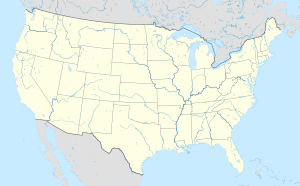Lower Hatchie National Wildlife Refuge facts for kids
Quick facts for kids Lower Hatchie National Wildlife Refuge |
|
|---|---|
|
IUCN Category IV (Habitat/Species Management Area)
|
|
| Location | Lauderdale, Tipton counties, Tennessee, United States |
| Nearest city | Gilt Edge, Tennessee |
| Area | 9,451 acres (38.25 km2) |
| Established | 1980 |
| Governing body | U.S. Fish and Wildlife Service |
| Website | Lower Hatchie National Wildlife Refuge |
The Lower Hatchie National Wildlife Refuge is a special place in West Tennessee. It is part of the National Wildlife Refuge system in the United States. This refuge covers about 9,451 acres, which is like 7,000 football fields!
It is a large area of wetlands. These wetlands are found where the Hatchie River and the Forked Deer River meet. The Hatchie River also flows into the mighty Mississippi River nearby.
The refuge is located in parts of Lauderdale and Tipton counties. It provides a rich home for many kinds of animals. This includes creatures that live in water and many different kinds of birds.
Contents
What is a National Wildlife Refuge?
A National Wildlife Refuge is a protected area. The United States Fish and Wildlife Service manages these places. Their main goal is to protect wild animals and their natural homes.
These refuges help keep different species safe. They also make sure that important natural areas are preserved for the future. People can often visit these refuges to learn about nature.
Why are Refuges Important?
Wildlife refuges are very important for many reasons. They provide safe places for animals to live and raise their young. This is especially true for animals whose homes are disappearing.
They also protect important ecosystems, like wetlands. These areas help keep our air and water clean. Refuges also offer chances for people to enjoy nature.
About Lower Hatchie Refuge
The Lower Hatchie National Wildlife Refuge was created in 1980. Its main purpose is to protect the unique wetlands and rivers here. These areas are vital for many species.
The refuge is located where two important rivers meet. This creates a special environment. It is perfect for many types of wildlife.
Location and Rivers
The refuge is found in southwestern Lauderdale County. It also stretches into northern Tipton County. These counties are both in Tennessee.
The Hatchie River is a key feature of the refuge. It is one of the last free-flowing rivers in the lower Mississippi River Valley. This means it flows naturally without many dams.
The Forked Deer River also joins the Hatchie River within the refuge. This meeting point creates diverse habitats. These habitats support a wide variety of plants and animals.
Wetlands: A Special Habitat
A big part of the Lower Hatchie Refuge is made of wetlands. Wetlands are areas where water covers the soil. This happens all year or for long periods.
They can be swamps, marshes, or bogs. Wetlands are sometimes called "nature's kidneys." This is because they help filter water and remove pollution.
Importance of Wetlands
Wetlands are incredibly important for the environment. They act like natural sponges. They soak up floodwaters and release them slowly. This helps prevent floods.
They also provide homes for many unique plants and animals. Many birds, fish, and insects depend on wetlands to survive. These areas are also important resting spots for migrating birds.
Animals and Plants of the Refuge
The Lower Hatchie Refuge is home to many different living things. Its wetlands and river habitats support a rich variety of wildlife. This includes birds, fish, mammals, and reptiles.
Birds of the Refuge
Many types of birds live in or visit the refuge. Waterfowl, like ducks and geese, are very common. They use the wetlands for feeding and resting during their long migrations.
Other birds, such as wading birds like herons and egrets, can also be seen. These birds hunt for fish and frogs in the shallow waters. The refuge is a birdwatcher's paradise.
Other Wildlife
Besides birds, many other animals thrive here. Various fish species live in the rivers and wetlands. Amphibians like frogs and salamanders also call the refuge home.
Mammals such as deer, raccoons, and even beavers can be found. Reptiles like turtles and snakes also play a role in the refuge's ecosystem. The diverse habitats support all these creatures.
Plant Life
The plant life in the refuge is also very rich. Many types of trees, shrubs, and grasses grow in the wetlands. These plants are adapted to living in wet conditions.
They provide food and shelter for the animals. Some common plants include cypress trees and various water plants. These plants help create the unique wetland environment.
Protecting the Refuge
The United States Fish and Wildlife Service works hard to protect the Lower Hatchie Refuge. They manage the land to keep it healthy for wildlife. This includes controlling invasive species.
They also work to restore habitats that have been damaged. Their efforts ensure that this important natural area remains safe. It will continue to be a home for wildlife for many years.
Conservation Efforts
Conservation is about protecting nature. In the refuge, this means managing water levels. It also involves planting native trees and plants. These actions help keep the ecosystem balanced.
Protecting the refuge also means educating people. Visitors learn about the importance of wetlands and wildlife. This helps everyone understand why these places need our care.


